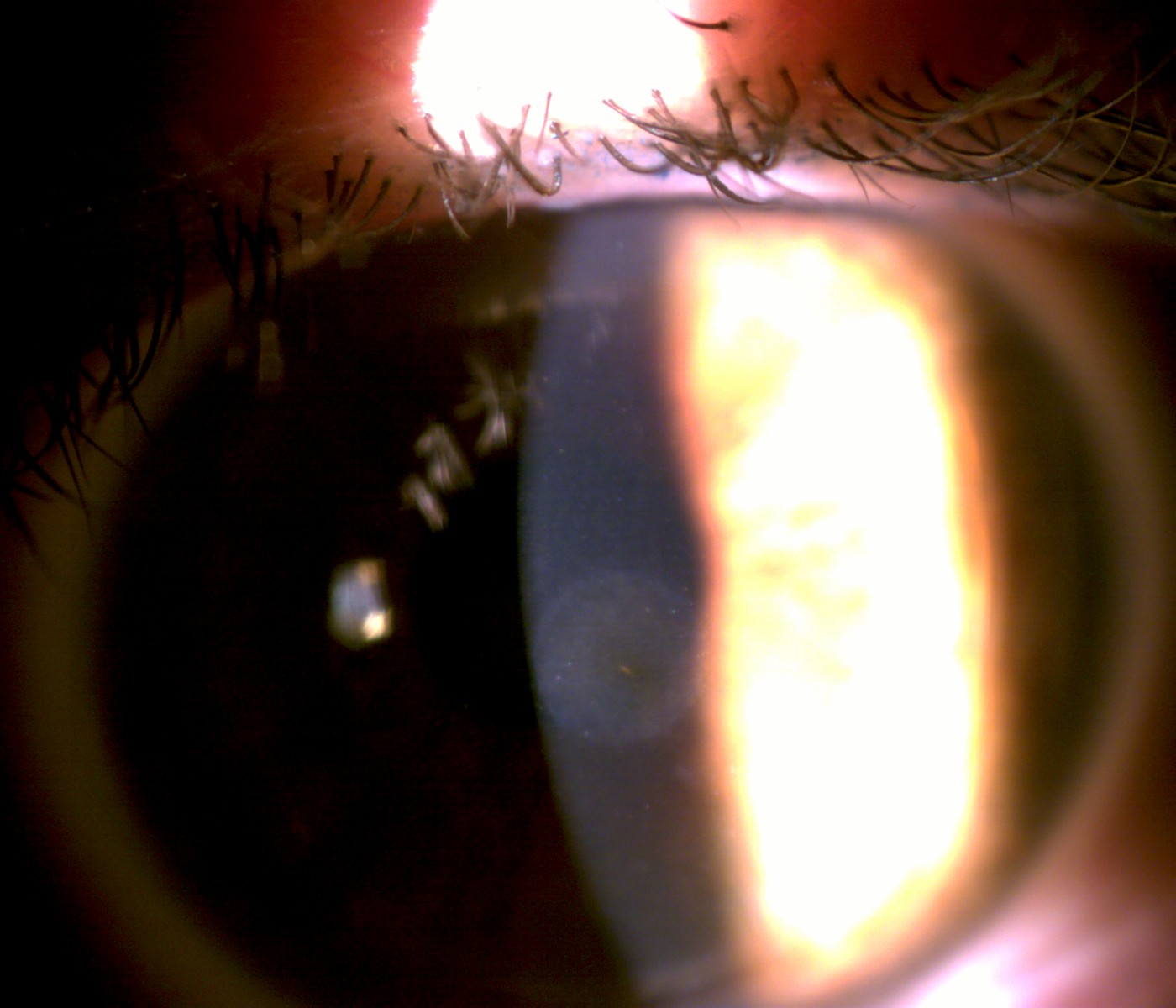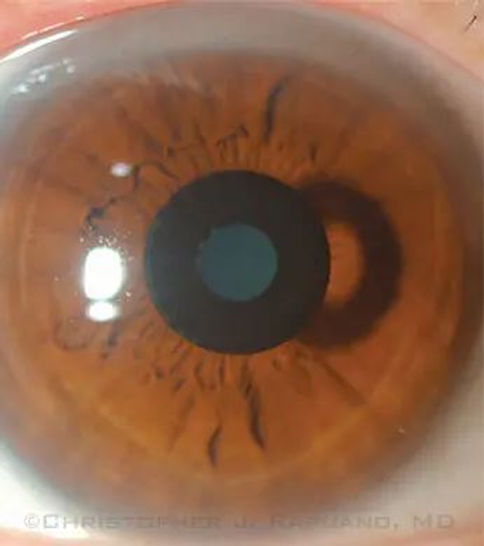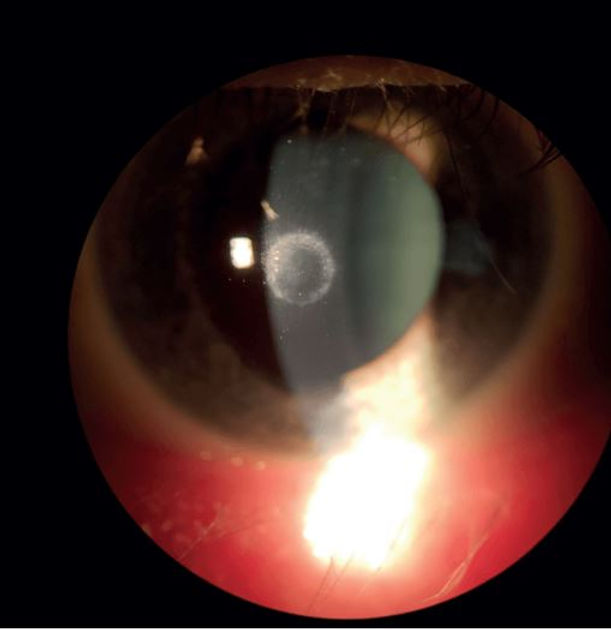While there are many amazing surgical ways to improve your vision, any surgery can result in complications if the body responds to the procedure in an adverse way.
I wanted to share this because, while it is a smaller audience, patients who have had surgical complications can really benefit from specialty contact lenses to restore their vision.
These two devices: the Kamra Inlay and the Raindrop Inlay (now recalled), are implanted into the cornea which is the front clear surface of your eye. These implants are for those over-40 who want to get rid of their reading glasses.
The device is implanted in the patient’s non-dominant eye only. The device creates a “pinhole” effect that gives the patient the ability to read. This pinhole effect comes from the way the implant is designed (a circle with a hole in the middle), that allows a straight beam of light through to hit the retina. Anytime you are looking through a small hole you have less light scatter which results in what is called “depth of focus”. This depth is what allows patients to read without reading glasses.
The cornea (where the device is implanted) is clear and does not have a blood supply. It receives its oxygen from the air. To see well, it is ideal to have a relatively spherical or symmetrical cornea.
With the Kamra and Raindrop Inlays, sometimes the patient’s body will see this new object as “foreign” and try to attack it. This can result in corneal inflammation, corneal neovascularization (vessel growth onto the cornea), corneal melts, and ultimately, corneal scarring. This is rare but it can happen.
This corneal scarring creates an irregular front surface of the eye. When light bounces off this irregular surface, it hits the retina in an irregular pattern, resulting in poor vision, blurry vision, light sensitivity, halos around lights, and difficulty driving.
This scarring is unable to be improved with glasses or soft contact lenses and using specialty contact lenses, you essentially create a brand-new, spherical, corneal surface, that can bring the light back into a straight line to reach the retina. This results in improved vision.

This is my patient who had the Raindrop Inlay which was removed. This resulted in central corneal scarring. Their vision with glasses was only 20/60-. We designed them a new rigid gas permeable lens (RGP) which gave them 20/25 vision and the ability to read more clearly and use both eyes together.

This is a photo from ophthalmologist Dr. Christopher Rapuano, MD demonstrating what the Kamra Inlay looks like on the front of the eye.

This photo is from Dr. Harvey Carter, MD’s profile in The Ophthalmologist showing a Raindrop Inlay that is starting to make the cornea inflamed and have complications.

